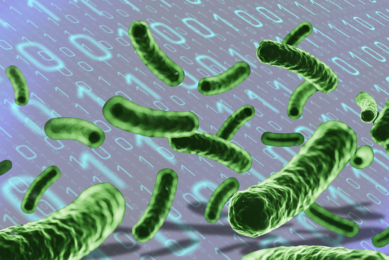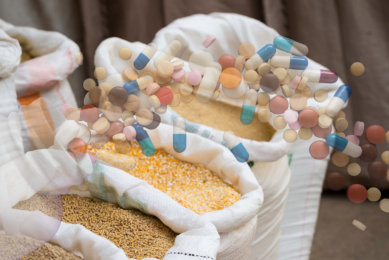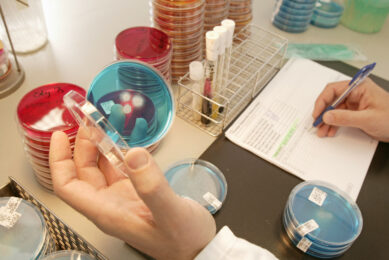Sustaining animal resilience post-AGP

Through their action on 3 lines of defence, Bacillus subtilis DSM 29784 and precision delivery coated butyrate help animals facing many external challenges, to maintain their physiological status in homeostasis and ensure their resilience. Thereby supporting the responsible use of antibiotics and improving sustainability of the livestock industry.
Antibiotic use as antibiotic growth promoters (AGPs) has allowed to increase food production at a lower cost, but antimicrobial resistance (AMR) also has a cost, both monetary and human. This observation pushes countries to adopt more strict regulations or antibiotic reduction programmes. In addition, final consumers are expecting more natural and healthier products. They are more inclined towards animal welfare and environmentally friendly products and are increasingly aware of AMR issues. This pressure on the animal sector forces the chain to adapt and find solutions to reduce their antibiotic use.
The animal production sector should have realistic expectations on antibiotic alternatives potential. For example, feed additives are not able to cure an upcoming disease. The experience in the EU with the AGPs ban in 2006 taught us that an integrated approach including strict government regulations, improved farm management, general animal health status and production processes minimises the effect of the ban on performance drop. The whole industry was worried but finally the efficacy of AGPs was very limited in terms of growth promotion or feed efficiency. Before 2000s, studies comparing performance with and without AGPs were showing very high performance increases when fed AGPs. A meta-analysis of more than 1000 experiments showed that on swine, AGPs improved the feed efficiency by 6.9% on average, and daily gain by 16.4% but the effect has changed over time. Indeed, studies after 2000 showed lower productivity gain. In 2002, Engster et al showed that the inclusion on AGPs on feed allowed only an increase in daily gain of 0.8% and 1% for the feed conversion ratio.
This apparent decrease of AGP efficacy has various causes, upon them optimisation of production conditions. Indeed, hygiene practices, genetic potential, nutrition and health status of animals are ensuring optimal production conditions. Functional feed additives can be good levers to maintain high performance, while supporting a responsible use of antibiotics, by sustaining animal resilience.
3 lines of defence
Each animal owns a physiological status which is in constant change due to its permanent exposure to intrinsic and extrinsic threats, infectious and non-infectious stressors. This physiological status tends always to go back to the perfect equilibrium, the homeostasis. The homeostasis is a self-regulating process essential to maintain the internal environment of animals in a steady and balanced state and to establish optimum conditions to execute normal physiological functions and thus, to keep the animal as close as possible to its best production potential. Some functional feed additives, such as probiotic Bacillus subtilis (strain DSM 29784) and precision delivery coated butyrate (PDCB), have been shown to be very effective in protecting animals by acting throughout 3 intimately connected lines of defence:
- ensure a resilient microbiome,
- strengthen barrier function and preserve gut integrity
- active immune system.
Bacillus subtilis-based probiotic
Bacillus subtilis (strain DSM 29784) beneficially influences the microbial ecology. Indeed, it stimulates beneficial bacteria such as Ruminococcus, known to breakdown polysaccharides to oligosaccharides, as well as Lachnoclostridium which are butyrate producers. It also helps to reduce the negative effect of harmful bacteria, thus improving intestinal microbiota balance -also called eubiosis- and creating an optimum environment for digestion and nutrient absorption.
Moreover, the direct effect of this Bacillus subtilis on the intestinal barrier has been investigated in an in vitro model using a pro-inflammatory molecule, TNF-α, to impair its integrity. The measurements of the transepithelial electrical resistance (TEER) and D-mannitol fluxes showed the capacity of Bacillus subtilis DSM 29784 to improve the intestinal barrier integrity. In addition, the ability of Bacillus subtilis DSM 29784 to directly reduce inflammation has also been evaluated. Using IL-8 as a marker of acute inflammation, this probiotic strain was able to reduce inflammatory responses in an in vitro model. It exerts its immunomodulatory properties by inhibiting IkB degradation, thus preventing NF-κB translocation and, by doing this, the expression of pro-inflammatory compounds such as IL-8 and iNOS enzyme. By controlling inflammation, Bacillus subtilis DSM 29784 allows poultry to reach their full genetic potential in terms of growth. Indeed, inflammatory responses use a significant amount of energy, which would otherwise be used for growth. Therefore, by reducing these responses, energy is saved, and growth is optimised.
A meta-analysis of 11 trials comparing performance results between AGPs and Bacillus subtilis (strain DSM 29784) was performed. This study showed that this Bacillus subtilis increased performance (body weight gain (BWG) and feed conversion ratio (FCR)) relative to non-supplemented control and did not affect feed intake (FI). This suggests that performance improvement is a result of the beneficial effects of Bacillus subtilis DSM 29784 on gut health. The results obtained with this probiotic were comparable to those obtained with AGPs, see Figure 1.
Figure 1 – Meta-analysis of trials comparing AGPs and Alterion.

Precision delivery coated butyrate (PDCB)
Butyrate has several beneficial properties in animals and in humans:
- it has been established as a regulator of intestinal microbiome,
- is the preferred energy substrate for colonocytes,
- can moderate intestinal permeability,
- can reduce oxidative stress, and
- can reinforce the colonic defence barrier, leading to decreased mucosal inflammation and increased cell regeneration rate.
In vitro, it has been demonstrated that butyrate enhances the barrier function and regulates the balance expression of claudin proteins maintaining the tight junction’s barrier function. Butyrate not only affects the host function but results in pathogens growth inhibition. In addition, butyrate has been described as triggering the expression of antimicrobial host defence peptides in the intestinal tract of animals.
Butyrate is used as a feed additive for poultry as an unprotected salt or in its protected form such as the PDCB. PDCB can deliver butyrate along the whole digestive tract from stomach to distal part of the intestine and therefore, has the potential to trigger beneficial butyrate-dependent effects throughout the entire digestive tract and therefore to get the most out of butyrate. It has been proven that PDCB significantly improved growth performance, immune response and intestinal morphology in experimentally induced necrotic enteritis, and increased the expression level of insulin-like growth factor-1 (IGF-1), and decreased the DNA fragmentation induced by C. perfringens in chicken broilers. Academic trials with broilers found a body weight gain of + 5.6% compared to the control and a 6.9% improvement in FCR on average, while in young weaning piglets, an increase in averaged daily gain of more than 10% is observed. In standard field conditions, feedback showed that an FCR and BWG improvement from 2 to 6% in broilers, a weaned litter weight increase between 5 to 8% in piglets and a laying percentage of +1 to 4% in layers and breeders, is for sure realistic.
Authors: Aurélie MOAL, Global Marketing Manager, Damien Prévéraud, Global Scientific & Technical Manager and Tim Goossens, Global Scientific & Technical Manager, Adisseo







